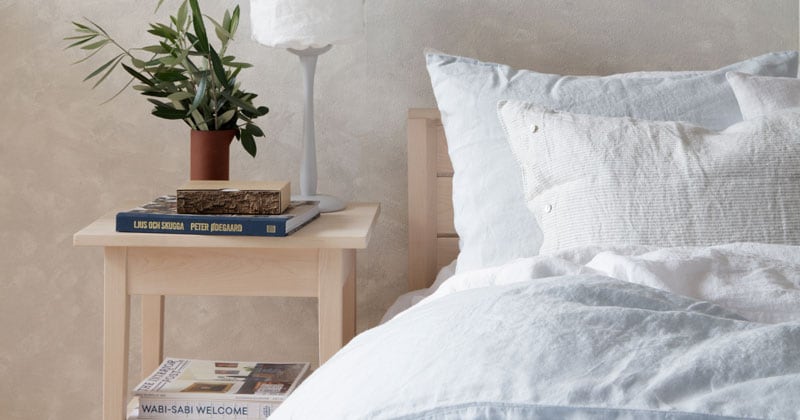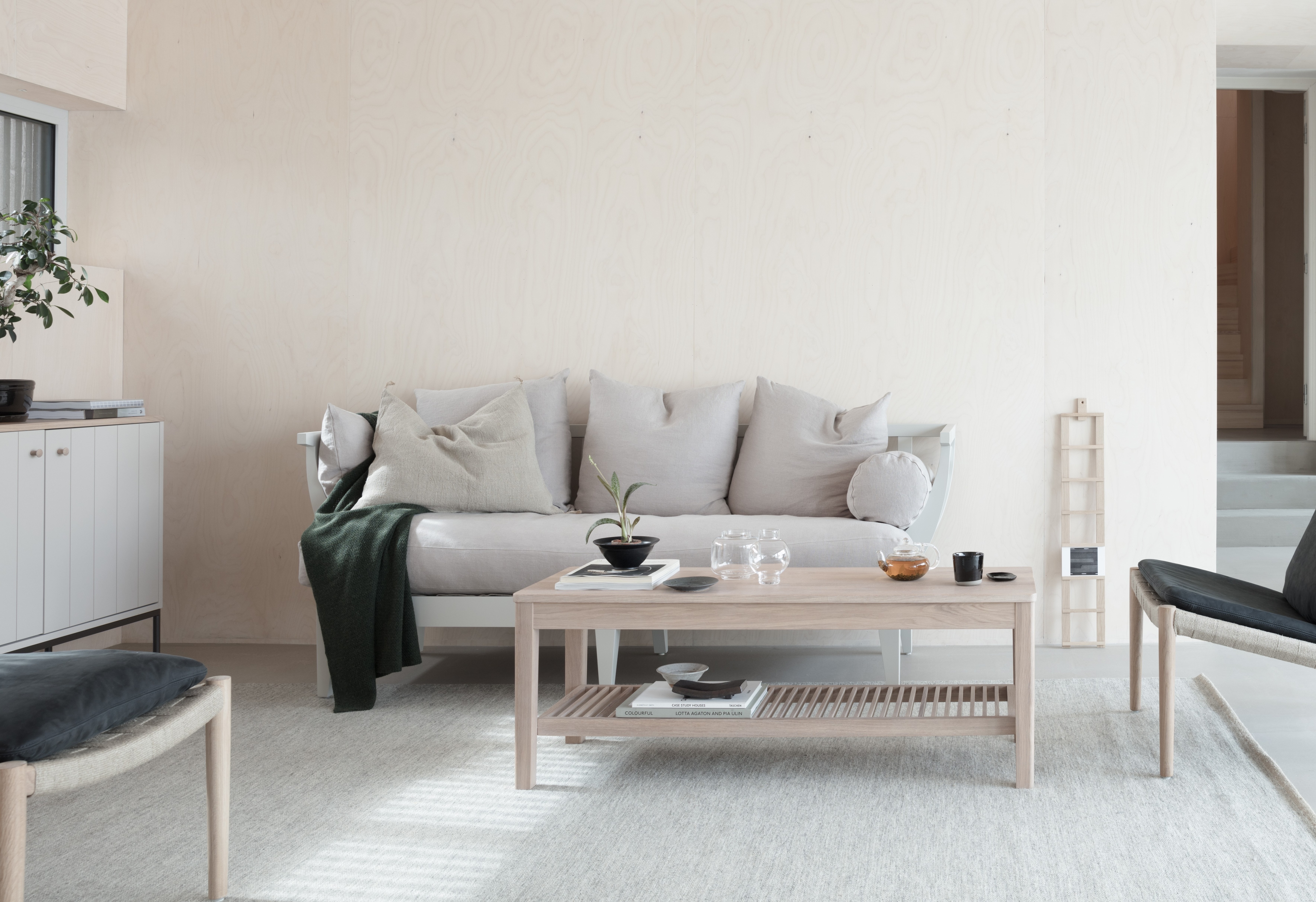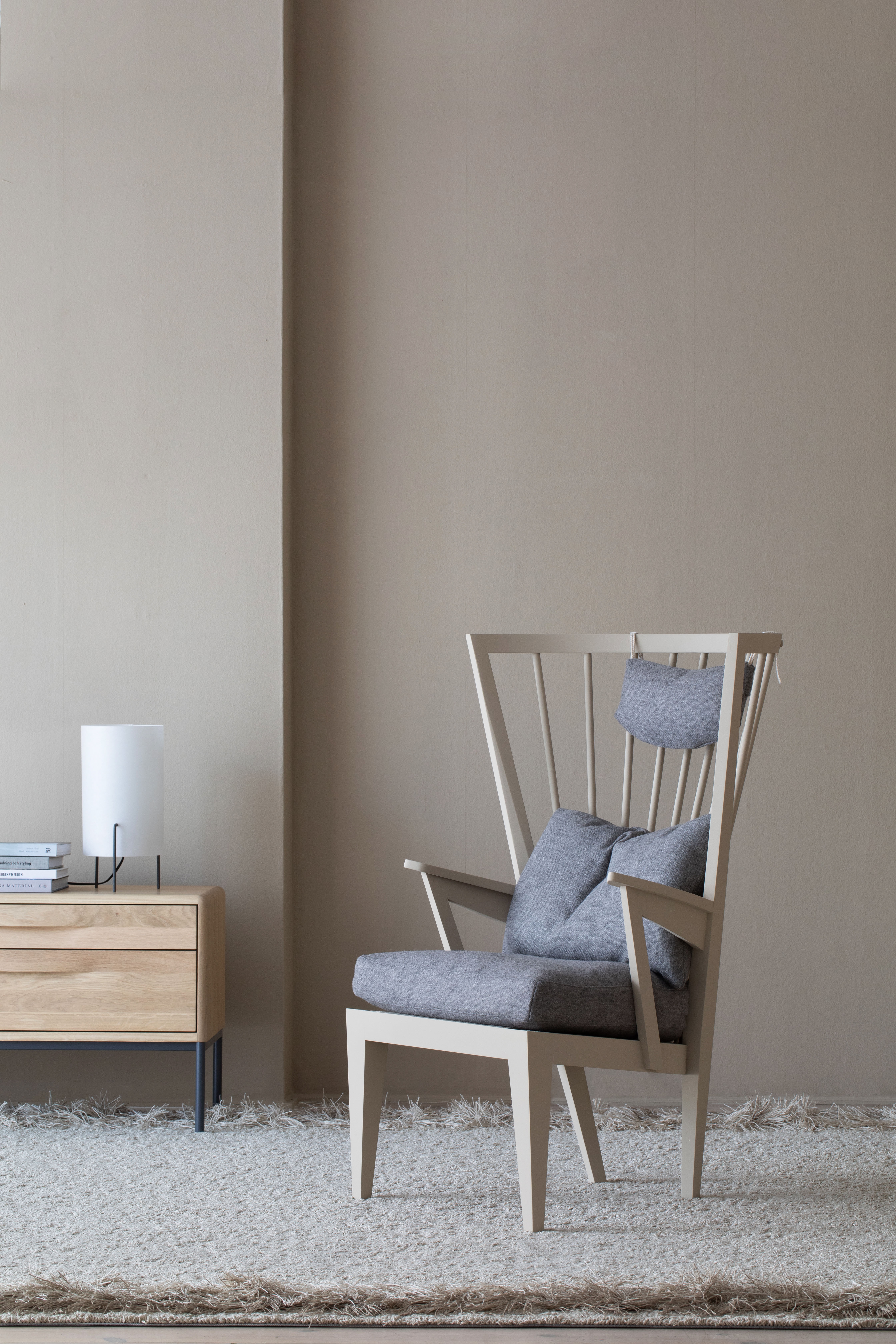From the magazine Color, Furniture & Interior. Issue 6/2018.
By: Elin Liljero Eriksson
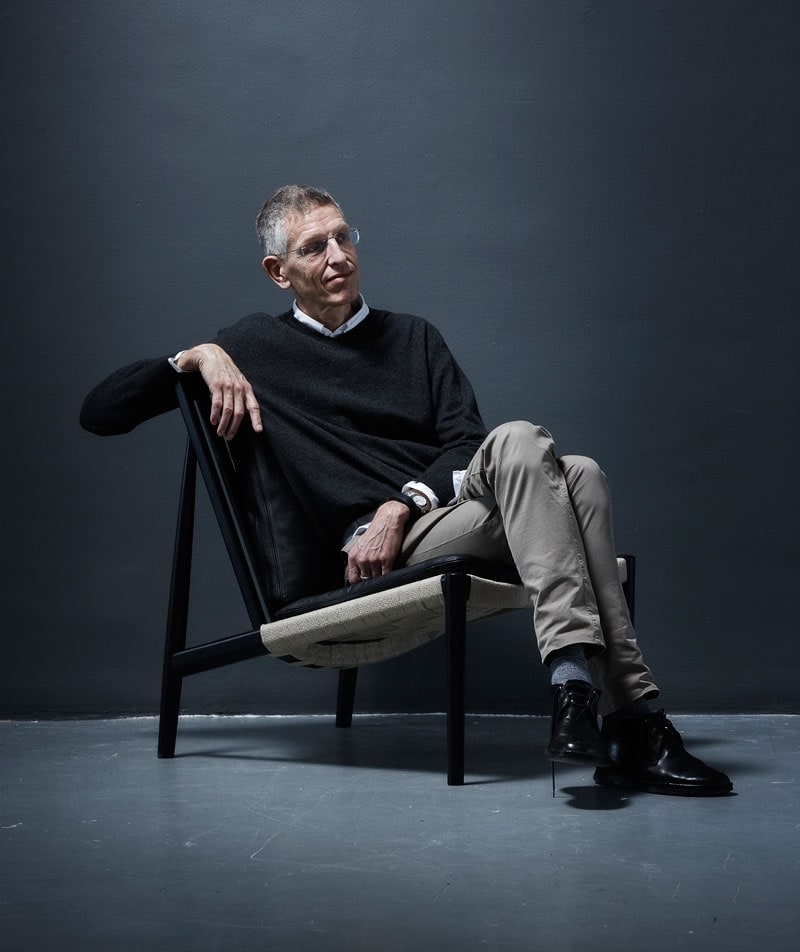
25 years of sustainability
With a clear set of values, Norrgavel were pioneers in creating sustainable interior design. This year (2018), they celebrated 25 years by both venturing into e-commerce and expanding with a new physical store. But the drive for the founder, designer Nirvan Richter, goes deeper than just selling stylish, quality furniture.
Having a vision to design sustainable furniture in natural materials that can be returned to nature was not something to boast about 25 years ago. On the contrary, it was rather something to keep quiet about, at least from a marketing perspective. But the idea of creating furniture with a circular economy mindset was the most important driving force both then and now for Nirvan Richter, founder of Norrgavel.
– My vision hasn't changed much over the years. What has changed is that some of the time has caught up with us, he says, continuing:
– One shouldn't boast, but it's nothing to conceal either: when we talked about circular economy thinking 25 years ago, it was a very limited group who didn't think it was strange. Within the business community, commerce, and retail, it wasn't discussed at all.
Norrgavel hired the marketing manager Tomas Löfgren, who was eager for Nirvan not to compromise on what he believed in but not talk about it too much, so as not to scare away customers.
– It says a lot about that time. There was a very strange perception that only doomsayers say that natural resources will run out. But you don't need to be an Einstein to understand that if you use nature's resources and never think about returning them to nature – then it's only a matter of time before they run out. It's not constructive, says Nirvan, but points out:
– If we had communicated our green values about sustainability at that time, people would interpret it as being a green wave romantic. Our consumers, modern people with modern professional and everyday lives, did not want to be associated with the green wave. There is a lot of identity building around our material consumption.
It's a different time now. Today, every other furniture company has some kind of environmental policy and sustainability guideline, which they are quick to highlight.
– Awareness has grown much larger in the past five to six years. It's really great. But people's patterns of life and consumption are like ocean liners, it's very difficult to change course. Despite the awareness now existing among people, we still consume in a way that is utterly appalling, says Nirvan.
So Norrgavel has never made a big deal out of its policy to manufacture furniture in natural materials, in order to give back to nature. And perhaps it's a winning marketing concept because Norrgavel always seems to have reached considerably more than just those who understand their thing.
– I remember when we moved the store from Kungsgatan to Stureplan in Stockholm and other types of customers started to discover us. In a way, it felt difficult that the loyal, environmentally conscious customers who knew exactly what Norrgavel was about no longer constituted the majority – it's fun to provide what is in demand. But after a while, I felt the opposite: here come people who buy Norrgavel furniture because they are stylish, and after a while, maybe they discover what we stand for on a deeper level. Moreover, it can be difficult to run a business with only an environmentally conscious target audience.
Already when Nirvan was studying architecture at the Royal Institute of Technology, KTH, in the 1970s, circular thinking was a given for him. He partly owes this to his father, who grew up on a farm in Dalarna.
– My father grew up on a farm where they were quite self-sufficient. They wove their fabrics, cultivated flax, and patched and repaired their clothes. Not in any romantic way, but that's how it was. During my youth, there was a lot of talk about oil and acidification. Father argued that you can't pump oil out of the Earth's crust indefinitely; it will run out someday. For my father, it was practical and obvious that what you take from nature must be returned in some way.
The nuclear power referendum in 1980 was a turning point for Nirvan.
– That's when the coin suddenly dropped: we can't use an energy source that generates waste products that take hundreds of thousands of years to neutralize. My conviction, which I have held for nearly 50 years, is that it's possible to find other solutions. The energy from solar radiation hitting the Earth is, in this context, virtually unlimited. It's becoming evident now – as long as you make a decision and set different rules of the game, you will find solutions that are much smarter.
Of the twelve prototype furniture pieces Nirvan showcased at the Bo 93 fair in Karlskrona 25 years ago, eleven are still around. The key to long-term success lies in never compromising on what you believe in – even if it's considered different – and requires being able to follow your own path.
– That's why I founded Norrgavel. I'm not inherently a businessperson or entrepreneur type, but I felt that if I were to sell furniture, market them with a long-term perspective, and devote much more to product development than is typically done, I had to find alternative sales channels. If I had gone through traditional furniture retail, I would have needed to spend a lot of my energy convincing people. Instead, I want to devote my energy to finding new smart solutions so that I can do what I want to do.
What kind of solutions has it been?
– When Maria Månsson, who initially was a prototype carpenter and later became CEO of Norrgavel, visited carpentry workshops and wished for the furniture to be manufactured in a certain way, the old men in the workshops would pat Maria on the shoulder and say, 'But dear little girl, we stopped doing it this way in the late 50s.' We didn't care about that. We thought: if we are going to manufacture furniture that will last a long time, maybe we need to find solutions that are not used as much anymore. That's what we've done consistently. At the same time, of course, we utilize the latest technology.
How have you achieved profitability at Norrgavel?
– It's a constant challenge. It requires a tremendous amount of work all the time and many skilled employees who dedicate their lives to our success. I thought, naively, that I would start a company that would eventually become a 'real' company. But that's not how it looks. It's constantly changing, and new challenges arise. You can never rest, and there's nothing wrong with that. You have to invest your life energy to succeed all the time.
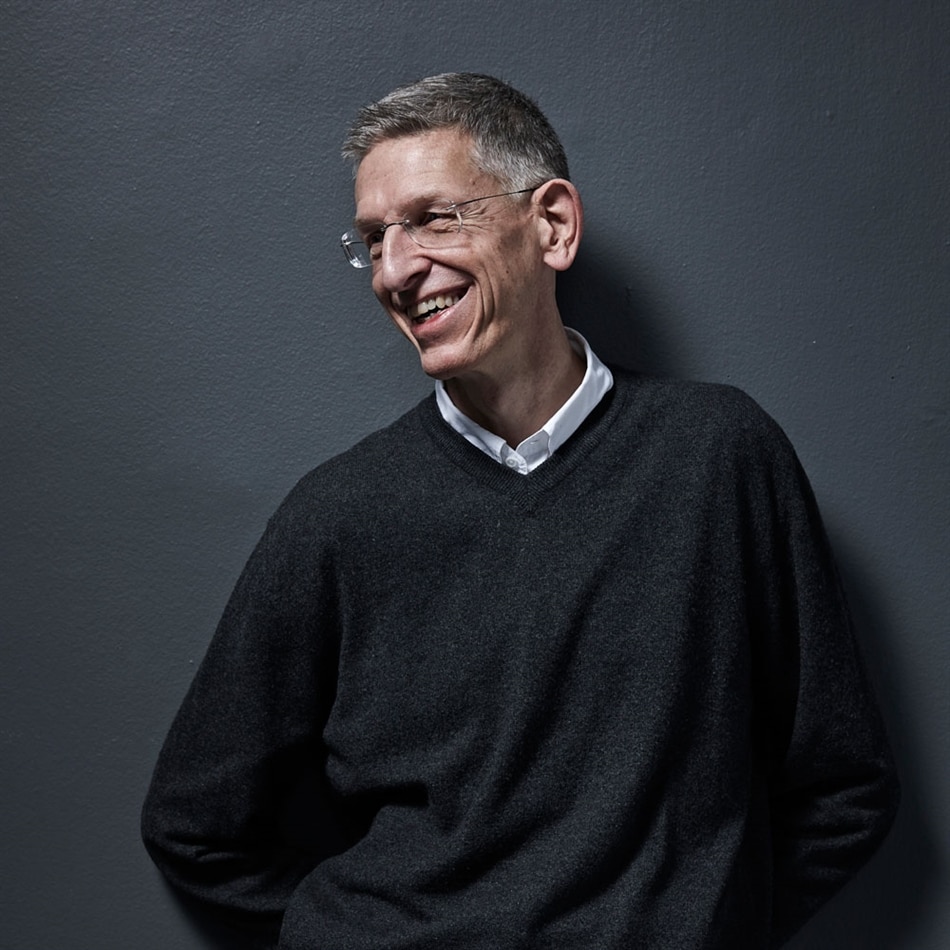
Already at a young age, Nirvan Richter learned to have a circular thinking.
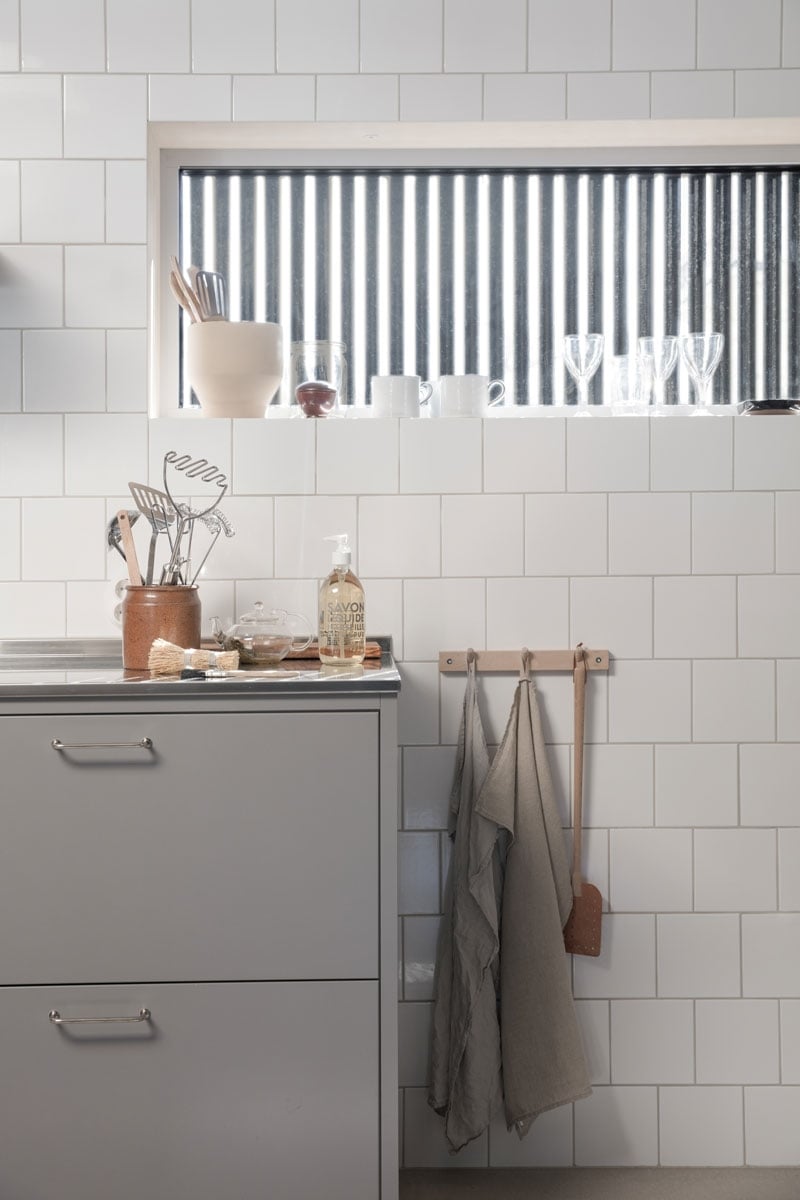
Coat hook rack in untreated birch.
What has been and is your driving force?
– The furniture is really quite irrelevant to me. I think it's fun to design furniture and with time you get better at what you do. But it is the life perspective that is important to me and what a human life is all about. I have a kind of existential curiosity. Many people, not least in the West, use their existential quest for leisure dreaming and play with completely different rules in their profession. I have never understood that. If you don't include existential questions - such as what is the point of being on this planet at all - in your professional life, I don't want to work.
– I've realised that Norrgavel and what I'm exposed to in the business are great and challenging for me as a person and in my way of moving forward in my own life. I don't mean focusing on making as much money as possible, but being exposed to challenges and questions and still being true to what you believe in - that's great.
What is your own favourite piece of furniture?
– My answer is probably like all designers: the piece of furniture you're working on right now. When you are working on something, you are completely fulfilled. As an architect, it is very much about going into your creation and finding something that is innovative in some way. It's important and it's fun, but it's also fun to do simple things that don't make a lot of noise but that bring joy to other people, like a simple console that I spent a couple of hours on, but which we sell a lot of. It also takes the ego boost out of the designer role.

En av Norrgavels älskade klassiker är Wooden Armchair, tell us about the ideas behind it!
– It started with me having a bodily experience and wanting to create a piece of furniture that corresponded to it. It had to be a simple piece of furniture, but not obtrusive. It had to be a big gesture and really feel like it was taking up space, while at the same time not making too much of a fuss. It should be almost invisible, transparent, have a comfort level reminiscent of a traditional earlobe chair and be so light that you can lift it with one finger. It should be made of as little material as possible but have material right where the body needs support. So both a high level of comfort, that you allow yourself the finest, but at the same time a kind of simplicity and airiness. Realising all this was one of the most difficult tasks I have done.
– The paradox of the armchair is that many people say it doesn't look very comfortable but when they sit in it they find it very comfortable.
How do you think the industry is doing in terms of sustainability?
– Everyone is talking about ecology now, but if you have been in the industry and know the products, very few people are justified in communicating sustainability. There is still a great immaturity in what is meant by sustainability. If you want to, you can be quite annoyed that some, quite successful companies, are beating their chests about their sustainability policy, but when you look below the surface, it doesn't hold up. On the other hand, we may be on the right track, and a lot of it comes from aware customers who can highlight the issues and spread them more than before. It's wonderful, but at the same time it's deadly for those companies that misbehave.
– I hope that civilisation comes to its senses before it is too late. I'm not a prophet of doom, but it doesn't look too good. Once we reach a certain temperature increase, there's no going back, and that's scary as hell. But many people are smart, so I hope the realisation grows even more soon.
Norrgavel does its bit by using natural materials, why?
– There are different approaches to furniture. Natural materials are not always functionally the best; there are lots of synthetic products that are absolutely marvellous, but they are also irreversible - we don't have the technology to return synthetic materials to the natural cycle. However, you can reuse them, but each time you recycle, the quality gets a little worse. That's why I chose to work only with natural materials.
How do you see your and Norrgavel's future?
– I take one day at a time. I enjoy going to work every day and I intend to keep doing it as long as it feels good. Of course, I want us to grow and become an even bigger player in the market because it gives us more opportunities. But the driving force for me is to be present here and now, to feel that I am doing good things and that I can make other people happy.
And that feels very good.

